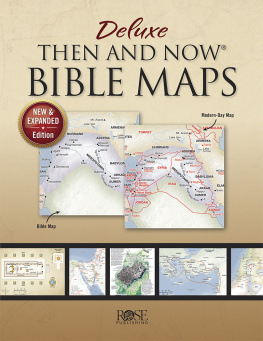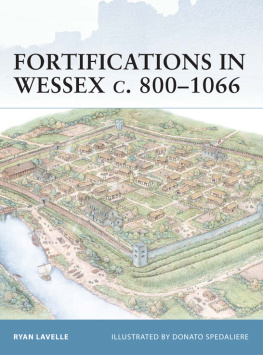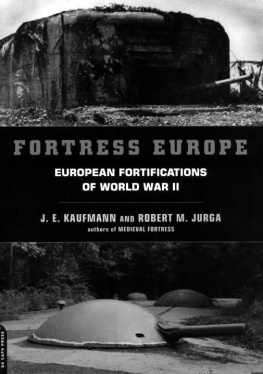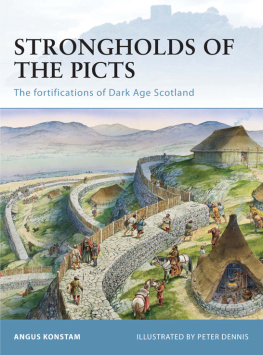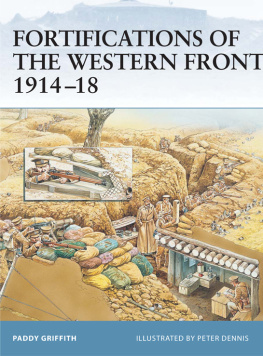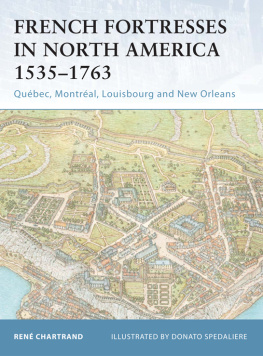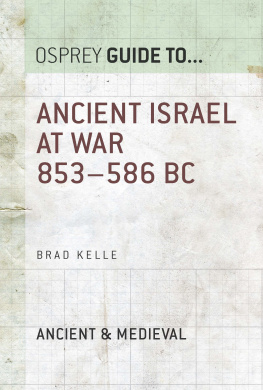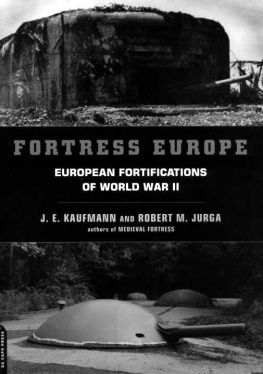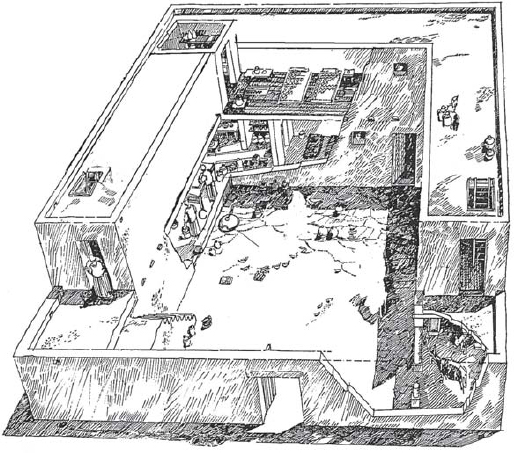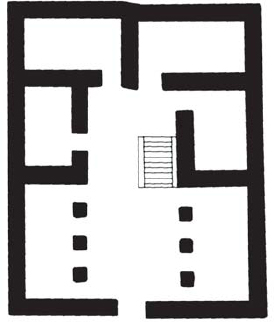FORTRESS 91
THE FORTIFICATIONS OF ANCIENT ISRAEL AND JUDAH 1200586 BC
| SAMUEL ROCCA | ILLUSTRATED BY ADAM HOOK |
| Series editors Marcus Cowper and Nikolai Bogdanovic |
CONTENTS
THE FORTIFICATIONS OF ANCIENT ISRAEL AND JUDAH 1200587 BC
INTRODUCTION
The subject of this book is the fortifications erected by the Israelites in the Land of Israel between 1200 BC , when they first began to settle there as a people, and 587 BC , when Jerusalem, the capital of Judah, fell into the hands of Nebuchadnezzar, of Babylon, and its population was deported to Babylonia. Before the Israelite settlement the Land of Israel had a very long history. Archaeologists divide the Biblical Period, or the earlier history of the Land of Israel, into two main phases: the Bronze Age (33001200 BC ), known also as the Canaanite Period after the main ethnic groups that dominated the Land of Israel, and the Iron Age (1200587 BC ), known also as the Israelite Period. This book will mainly focus on the latter.
Rameses III and the Sea Peoples. This illustration shows part of the inscriptions from Medinet Habu, a temple built for Rameses III at Thebes in Egypt. It shows the Philistine ships engaged in a naval battle with the Egyptian fleet. (Authors collection)
A reconstruction of a four-room house. This type of building was the main characteristic of Israelite settlements throughout the Iron Age. (Authors collection)
Archaeological artefacts can best be understood when related to other sources, particularly written ones. The latter for the period in question chiefly comprises the Bible (in particular the Book of Judges, the First and Second Book of Samuel, and the First and Second Book of Kings), but the Assyrian and Babylonian annals (written in cuneiform characters), and various epigraphic material (such as the stele of Mesha, king of Moab, the Siloam inscription and various ostraca fragments of pottery or stone) are no less important. Sometimes the archaeological/epigraphical evidence fits with the Bible, sometimes it contradicts it, but more often than not the two work together to form a more complete picture.
A schematic plan of a four-room house. The house has a square overall plan. The three front rooms are built at right angles to the back room. The central space served as courtyard. (Dalit WeinblattKrausz)
The Israelite settlement
Iron Age IA (12001150 BC ) saw the decline of Egyptian control of the Land of Canaan. Around 1200 BC , the Late Bronze Age world was shattered by a series of cataclysmic invasions. The huge Hittite empire in Asia Minor was overrun by the Sea Peoples, who also threatened mighty New Kingdom Egypt until Pharaoh Rameses III defeated them on sea and land, an achievement celebrated on the walls of the temple he erected at Medinet Habu. Following his victory over the Sea Peoples, Rameses III made them subjects and settled many of them (chiefly the Philistines) along the Canaanite coast. The Tjeker, another of the Sea Peoples, settled in the Canaanite city of Dor further north. The Canaanites maintained their presence in the plains, as well as in most of the fortified cities scattered around the country. The Philistines developed a confederation of city-states, notably Gaza, Ashkelon, Ashdod, Gath and Ekron, and erected settlements encircled by walls.
The settlement of the tribes
The archaeological evidence (chiefly, the four-room house and pottery such as the so-called collared rim jar) points to a distinctive identity among the early Israelite settlers, as well as to the gradual settlement of nomadic tribes in several locations scattered around the country. These include the area around Mount Meron in Upper Galilee, in the hills of Western Galilee, in the captured Canaanites cities of Hazor and Dan, and in lower Galilee, mostly in the hilly region of Shefaram in the area of the tribe of Zebulun. The greatest numbers of settlements are around Ephraim and Manasseh; between Shechem and the Jezreel Valley a 100 sites have been surveyed. In the settlement area of Benjamin, some 12 settlements have been identified, including Tel en-Nasbeh, the Biblical Mizpah, and Tell el-Full, the Gibeah of Saul. In Judah, the Hebron Hills and the Shepelah of Judah, there were few settlements (Hebron, Beth Zur, Tell Beth Mirsim). Around Jerusalem, the only Israelite settlement so far surveyed and excavated is Giloh. Very few settlements have been discovered in the south; in the Arad and Beer-sheba valleys the most important settlements were Tel Masos, Tel Esdar and Tel Beer-sheba. However, intensive settlement occurred farther south in the Negev highlands. In Transjordan, many settlements surveyed in Gilead may be linked to the half-tribe of Manasseh.
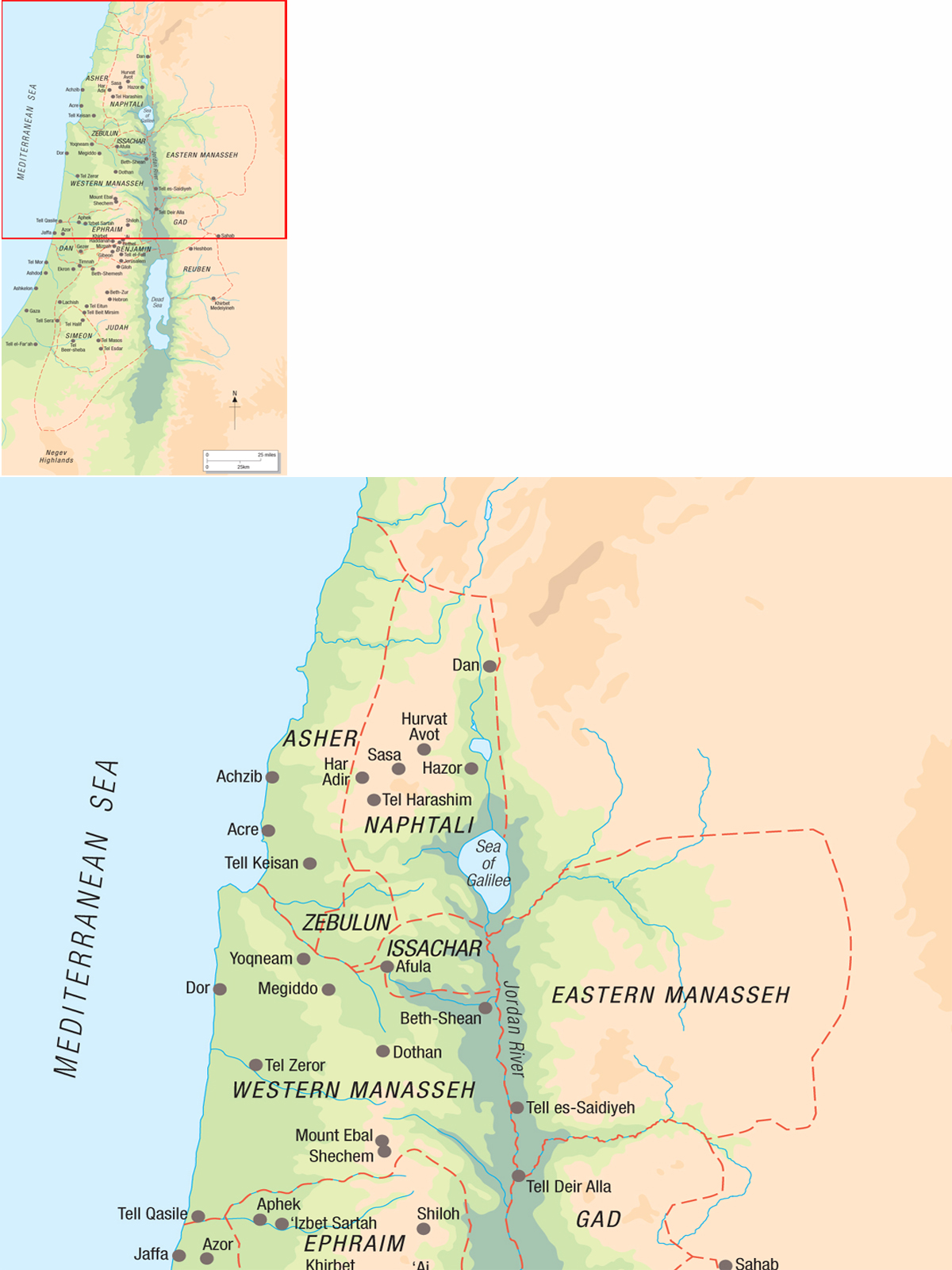
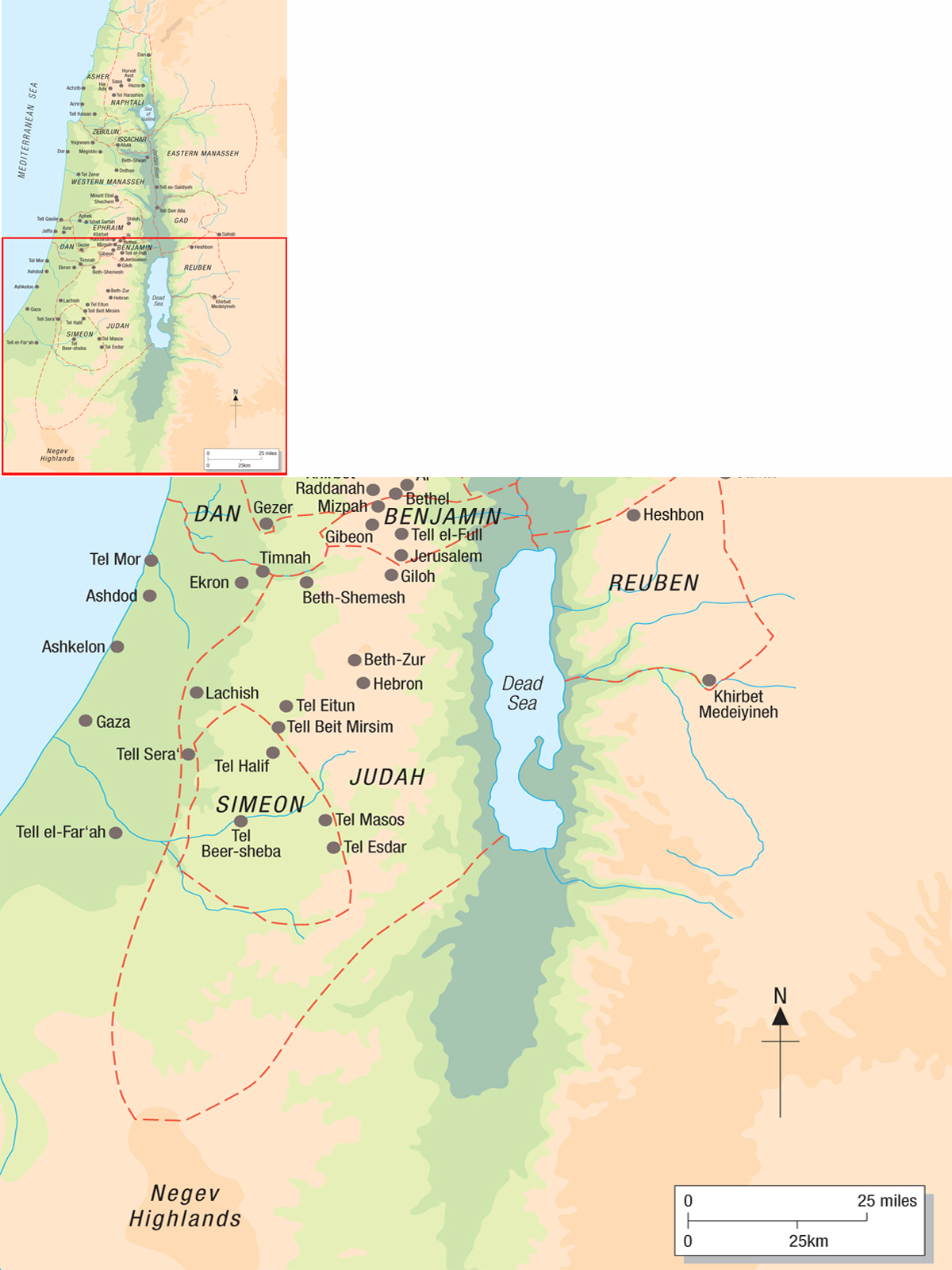
The Land of Israel during the period known as Iron Age I, or the period of the Judges (12001000 BC ).
The Israelites began to settle alongside the Canaanites and Philistines between 1200 and 1005 BC , at first in the northern part of the country and in the central hills. The Bible (Joshua 15: 63, 16: 10 and 16: 1118, and Judges 1: 2135) states that the Israelite tribes settled after conquering the country under the leadership of Joshua. Later, Judges (local leaders) were elected by each tribe or group of tribes to fight the Canaanite city-states, and hostile tribes such as the nomadic Midianites, the Moabites and the Ammonites, who together with the Edomites settled in this period in the eastern part of Transjordan. Most of the Judges, with the exception of Othniel, came from the northern tribes. Only towards the end of the period were the Israelite tribes powerful enough to resist the Philistine city-states, under Samson from the tribe of Dan. By the end of the Period of the Judges, the Israelite tribes had settled in the central areas too. At this stage, the tribe of Dan was in the extreme north of the country, the tribes of Asher and Naphtali had settled in Upper Galilee and the tribes of Zebulun and Issachar were in Lower Galilee. In the central part of the country the tribe of Manasseh was in the northern part of Samaria, while the tribe of Ephraim had settled in the southern part. The tribe of Benjamin had settled in the area around the Canaanite enclave of Jebus, the future Jerusalem. In the Transjordan were settled (from north to south) the tribes of Manasseh, Gad and Reuben. In southern Transjordan were settled the tribes of Judah in the area of Judaea, and of Simeon further south.
THE DEVELOPMENT OF THE FORTIFICATIONS
Iron Age I: from huts to houses
During the period known as Iron Age I, the Period of the Judges, the Israelites passed from a semi-nomadic society of shepherds, with a loose tribal organization, to a settled society of farmers. This is reflected in the design and development of their settlements. According to the archaeologist Zeev Herzog, it is possible to distinguish five main types. The first type of settlement comprises huts and pits. These settlements are mainly found in the northern valleys, the hill country, the Sharon Plain and the Negev. The structures consist of pits that were dug for water and as ovens. It seems that at this stage the population still lived in tents or huts. There is no clear indication of any system of defence. However, the fact that these pits are concentrated together may indicate that the settlers favoured a closer settlement, making it easier to defend.
Next page




